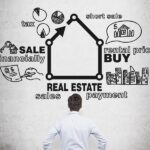The pre-historic period is generally considered to date from around 10,000 BC to 1 AD according to fashion history. This is the time when people first began to make and wear clothing. The middle ages are usually thought of as spanning from the 5th to the 15th century. During this time, fashion became more elaborate and structured. The modern era is generally considered to have begun in the 16th century. This is when fashion began to be influenced by trends and social movements.
The Victorian Era of Western Fashion
The Victorian Era is often considered to be one of the most important periods in the history of Western fashion. The styles of the period were heavily influenced by the British Queen Victoria, who ruled from 1837 to 1901. During the Victorian Era, there was a strong emphasis on modesty and propriety. Women were expected to dress in a way that would not attract too much attention to themselves. Skirts were typically long and often featured a train. Sleeves were also long and often decorated with lace or ruffles.
The Victorian Era was also a time of great technological advances. One of the most important inventions of the era was the sewing machine, which allowed for the mass production of clothing. This made it possible for people of all classes to afford fashionable clothing.
The Victorian Era was a time of great change for Western fashion. The styles of the period were heavily influenced by the British Queen Victoria and the era was marked by a strong emphasis on modesty and propriety.
The Edwardian Era of Western Fashion
The Edwardian Era of Western fashion is considered to have begun in the 1890s and ended in the 1910s. This period was named for King Edward VII of the United Kingdom, who ruled from 1901 until his death in 1910. During this time, fashion began to change more rapidly than it had in previous centuries. Skirts became shorter, waistlines rose, and sleeve styles became more varied.
One of the most notable changes during the Edwardian Era was the rise of the ” Gibson Girl .” This idealized image of an American woman was tall, slim, and stylish. She was often seen wearing a fitted shirtwaist, a long skirt, and a wide-brimmed hat. The Gibson Girl was the epitome of the Edwardian Era’s fashionable woman.
While the Gibson Girl was ideal, not all women were able to achieve this look. Those who could not afford the latest fashions often made do with what they had. Women who could not afford new clothing would often “remake” their old clothing into new styles. This was done by adding trimmings, altering the silhouette, or simply changing the way the clothing was worn.
The Edwardian Era was a time of great change in Western fashion. Skirts became shorter, waistlines rose, and sleeve styles became more varied. The Gibson Girl was the epitome of the fashionable woman of the time. While not all women could achieve this look, those who could not afford new clothing often remade their old clothing into new styles.
The 20th Century of Western Fashion
The history of fashion in the Western world has been largely shaped by the social and economic changes of the 20th century. In the early years of the century, Western fashion was heavily influenced by the styles of the Edwardian era, as well as the Art Nouveau and Art Deco movements. The 1920s saw a dramatic shift in fashion, with the rise of the flapper look and the emergence of new designers such as Coco Chanel and Elsa Schiaparelli.
The 1930s were marked by the Great Depression, but also saw the rise of Hollywood glamour and the birth of ready-to-wear fashion. The 1940s were a time of war, but also saw the emergence of new fashion trends such as the New Look of Christian Dior. The 1950s were a decade of prosperity and saw the rise of teenage fashion and the birth of the couture house of Givenchy.
The 1960s were a time of social change and saw the rise of youth culture and the hippie look. The 1970s were a time of disco and glam rock, as well as the emergence of new designers such as Vivienne Westwood. The 1980s were a decade of excess, with big hair and shoulder pads being all the rage. The 1990s saw the return of minimalism, as well as the rise of grunge and hip-hop fashion.
The 21st century has seen the rise of fast fashion and the growth of the fashion industry in developing countries such as China and India. There has also been a renewed interest in vintage and retro styles.
The 21st Century of Western Fashion
The 21st century has seen a dramatic shift in the Western world’s approach to fashion. In the early 2000s, the fashion scene was dominated by skinny jeans, tracksuits, and Juicy Couture velour leisurewear. However, by the mid-2000s, a new wave of fashion had emerged, led by celebrities like Mary-Kate and Ashley Olsen, Sienna Miller, and Kate Moss. This new wave of fashion was characterized by vintage-inspired clothing, bohemian styles, and a more laid-back approach to dressing.
Today, Western fashion is more diverse than ever before, with people embracing a wide range of styles, from athleisure to streetwear to high fashion. The 21st century has also seen the rise of fast fashion, with brands like H&M and Zara churning out new collections on a regular basis. This has made it easier than ever for people to keep up with the latest trends.
So, what does the future hold for Western fashion? Only time will tell, but one thing is for sure: the 21st century has been a game-changer for the fashion industry.






